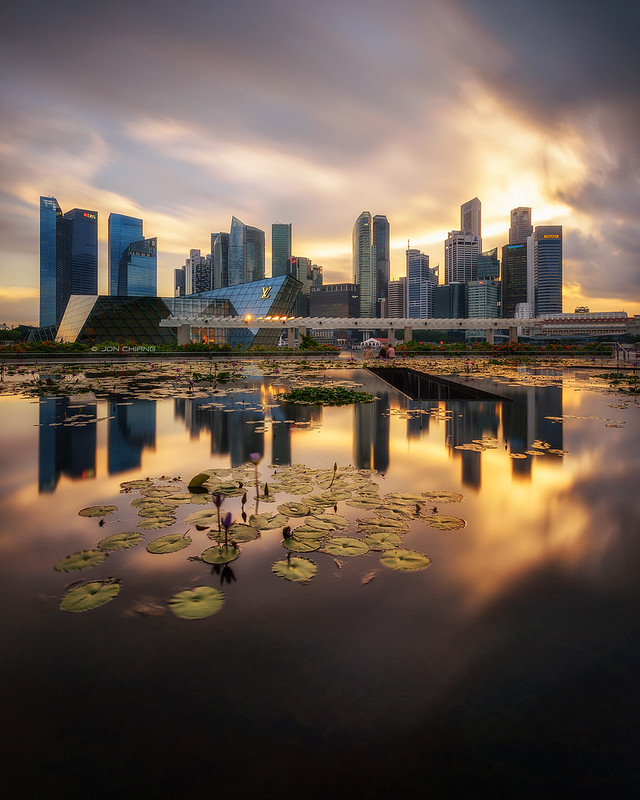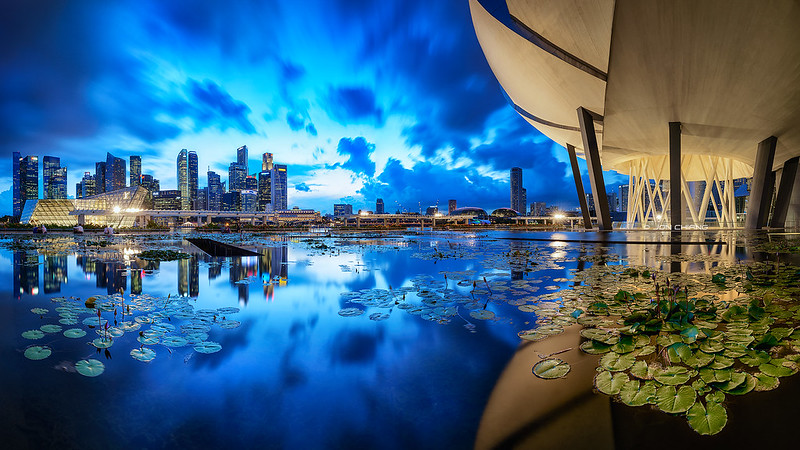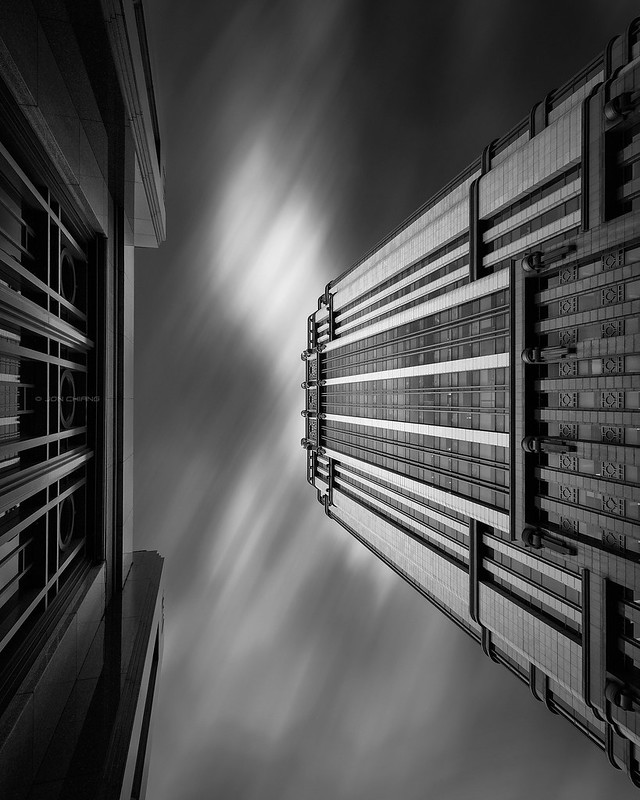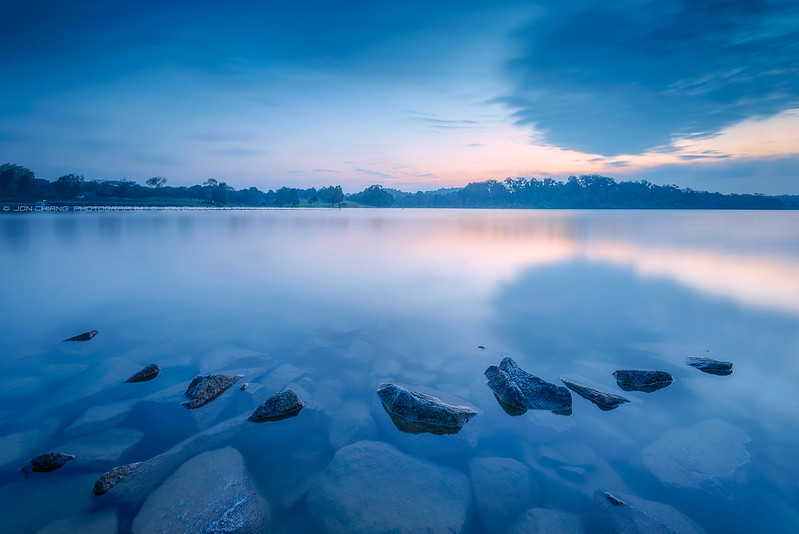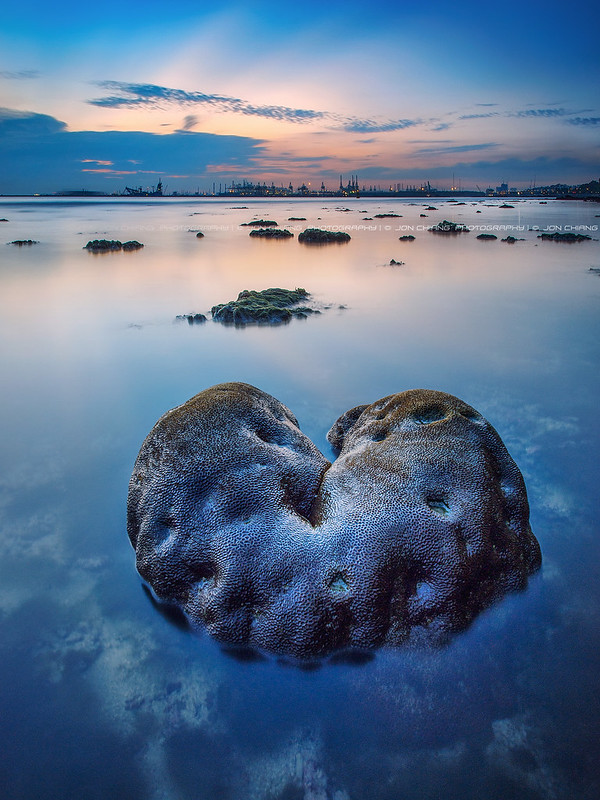Update: Check out my review of Haida's 150mm filter solution and their Nanopro range here!
Besides our trusty tripod, landscape photographers would oftentimes carry a set of filters - be it slot-ins or screw-ons. For me, I opted for the former as I felt they provide more versatility in positioning the filters, especially the graduated neutral density (GND) ones. I've been using a mixture of Lee and Hitech 100mm slot-in filters for my main landscape lens - the Nikon 17-35mm - and was almost certain that Lee filters pack the most bang for the buck in the areas of resolution and colour casts, especially when compared with Hitech filters, so I was curious about how the Haida filters would match up against the venerable Lee system. Since I had issues with colour casts with my Hitech filters, especially when stacked, I was initially skeptical of the Haida filters. Nevertheless, I was eager to see how they performed, so I contacted Photosphere, and they kindly provided me with the Haida 3 and 10 stop slot-in ND filters.
As such, I will be performing this review by comparing them directly with the filter kit I currently carry with me when shooting scapes. As I do not have a Lee 0.9 (3 stop) ND filter (or their more expensive Proglass counterpart), I will be comparing the Haida 3 stop filter with my Lee 0.9 GND reversed, in order to use the dark top half of the GND as a full ND filter.
Overview of the Filters
The Haida ND filters came packaged in a plastic box, much larger than their 100mm full ND filters (they seem to fit 150mm by 100mm filters, which possibly might be released in the future). Wrapped in a Haida lint-free cloth, they seemed reasonably well-protected against accidental knocks. Both the Haida 3 and 10 stop filters came with a stick-on gasket, which you may opt to apply onto the filter. I was also glad that both of them are made of optical glass, as glass filters fare much better optically than their resin counterparts, and they scratch much less easily. However, they are quite brittle, and would not handle a drop too well, unlike the resin ones.
I do wish that the Haida filters would come packaged in a soft pouch, like the Lee filters, as carrying the plastic filter holders they come in would be pretty inconvenient and cumbersome. As I had the Lowepro S&F filter pouch, this wasn't much of an issue for me as I usually carry my filters around using the pouch.
I'd also reckon that the Haida slot-in filters are multicoated (correct me if I'm wrong), since their circular screw-on counterparts do feature multicoating. As such, I was pleasantly surprised that fingerprints and marks are easily wiped off with the included cloth or a piece of cotton wool, unlike the notorious Hoya ND400.
Filter Specifications
Material: Schott Optical Glass
Dimensions: 100mm by 100mm square
Compatibility: Fits Lee and Hitech holders, and perhaps most holders designed for the 100mm filter system

Haida 3 stop filter package. Clockwise from top: plastic case, 3 stop ND filter, stick-on gasket and cleaning cloth.

Lee Big Stopper on the left and Haida 10 stop ND on the right. Third-party DoFilters 100mm holder on the top.
Comparison with Lee Filters
As I don't have a test chart at home, I thought I'd shoot something from outside my window instead, so please forgive the ugly scene! To test how much of an impact the filters would have on resolution, I cropped a portion (highlighted in red) to see the effect of each filter on the image. I used a Nikon D800E with a Nikon 85mm f/1.4D lens at f/8, ISO 100 on cloudy white balance. Tripod and head used was a RRS-TVC-33 and an Arca-Swiss B1, so there shouldn't be any issues with camera shake here. For each exposure, I locked the mirror up before firing the shutter with a wireless remote.

Test scene with crop box.
From the results of the test images below, I see no major loss in image quality when the scene was shot with the Haida filters, which was rather pleasantly surprising. It was good to note that the Haida filters held up against their Lee counterparts very well. Even more surprising was that the Haida filters were very neutral (or at least, very slightly warm), especially the 10 stop! This was a first for me as all the heavy stoppers I had used in the past (Hoya ND400 and Lee Big Stopper), exhibited a very strong blue cast (especially the Lee). Although not difficult to correct (I usually use the white balance picker tool), I was happy to know that the Haida filter needed even less correction, if at all.

Images in this order: No filters, Haida 3 stop, Lee 0.9 GND reversed for top half, Haida 10 stop and Lee Big Stopper. Full-res images could be found here.http://farm6.staticflickr.com/5459/9725607386_10ae3b8394_o.jpg
Besides our trusty tripod, landscape photographers would oftentimes carry a set of filters - be it slot-ins or screw-ons. For me, I opted for the former as I felt they provide more versatility in positioning the filters, especially the graduated neutral density (GND) ones. I've been using a mixture of Lee and Hitech 100mm slot-in filters for my main landscape lens - the Nikon 17-35mm - and was almost certain that Lee filters pack the most bang for the buck in the areas of resolution and colour casts, especially when compared with Hitech filters, so I was curious about how the Haida filters would match up against the venerable Lee system. Since I had issues with colour casts with my Hitech filters, especially when stacked, I was initially skeptical of the Haida filters. Nevertheless, I was eager to see how they performed, so I contacted Photosphere, and they kindly provided me with the Haida 3 and 10 stop slot-in ND filters.
As such, I will be performing this review by comparing them directly with the filter kit I currently carry with me when shooting scapes. As I do not have a Lee 0.9 (3 stop) ND filter (or their more expensive Proglass counterpart), I will be comparing the Haida 3 stop filter with my Lee 0.9 GND reversed, in order to use the dark top half of the GND as a full ND filter.
Overview of the Filters
The Haida ND filters came packaged in a plastic box, much larger than their 100mm full ND filters (they seem to fit 150mm by 100mm filters, which possibly might be released in the future). Wrapped in a Haida lint-free cloth, they seemed reasonably well-protected against accidental knocks. Both the Haida 3 and 10 stop filters came with a stick-on gasket, which you may opt to apply onto the filter. I was also glad that both of them are made of optical glass, as glass filters fare much better optically than their resin counterparts, and they scratch much less easily. However, they are quite brittle, and would not handle a drop too well, unlike the resin ones.
I do wish that the Haida filters would come packaged in a soft pouch, like the Lee filters, as carrying the plastic filter holders they come in would be pretty inconvenient and cumbersome. As I had the Lowepro S&F filter pouch, this wasn't much of an issue for me as I usually carry my filters around using the pouch.
I'd also reckon that the Haida slot-in filters are multicoated (correct me if I'm wrong), since their circular screw-on counterparts do feature multicoating. As such, I was pleasantly surprised that fingerprints and marks are easily wiped off with the included cloth or a piece of cotton wool, unlike the notorious Hoya ND400.
Filter Specifications
Material: Schott Optical Glass
Dimensions: 100mm by 100mm square
Compatibility: Fits Lee and Hitech holders, and perhaps most holders designed for the 100mm filter system

Haida 3 stop filter package. Clockwise from top: plastic case, 3 stop ND filter, stick-on gasket and cleaning cloth.

Lee Big Stopper on the left and Haida 10 stop ND on the right. Third-party DoFilters 100mm holder on the top.
Comparison with Lee Filters
As I don't have a test chart at home, I thought I'd shoot something from outside my window instead, so please forgive the ugly scene! To test how much of an impact the filters would have on resolution, I cropped a portion (highlighted in red) to see the effect of each filter on the image. I used a Nikon D800E with a Nikon 85mm f/1.4D lens at f/8, ISO 100 on cloudy white balance. Tripod and head used was a RRS-TVC-33 and an Arca-Swiss B1, so there shouldn't be any issues with camera shake here. For each exposure, I locked the mirror up before firing the shutter with a wireless remote.

Test scene with crop box.
From the results of the test images below, I see no major loss in image quality when the scene was shot with the Haida filters, which was rather pleasantly surprising. It was good to note that the Haida filters held up against their Lee counterparts very well. Even more surprising was that the Haida filters were very neutral (or at least, very slightly warm), especially the 10 stop! This was a first for me as all the heavy stoppers I had used in the past (Hoya ND400 and Lee Big Stopper), exhibited a very strong blue cast (especially the Lee). Although not difficult to correct (I usually use the white balance picker tool), I was happy to know that the Haida filter needed even less correction, if at all.

Images in this order: No filters, Haida 3 stop, Lee 0.9 GND reversed for top half, Haida 10 stop and Lee Big Stopper. Full-res images could be found here.http://farm6.staticflickr.com/5459/9725607386_10ae3b8394_o.jpg
Last edited:






